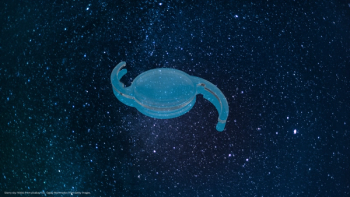
Partnering multifocal IOLs with LASIK to achieve perfect vision
Without performing LASIK, 85-90% of [multifocal IOL] patients may achieve spectacle independence. However, with LASIK success rates are about 99%
Offering this bioptics package can be beneficial because lens power calculation will not achieve emmetropia in all patients. In addition, any residual ammetropia will require patients to use glasses, which counteracts the planned benefits of potential spectacle independence with multifocal intraocular lenses (IOLs).
The combination approach in practice
Three-month follow-up data on these patients (nine with an Intralase flap preoperatively) with multifocal IOL implants (Tecnis; AMO, ReZoom; AMO & ReStor; Alcon) and subsequent wavefront-guided CustomVue LASIK (AMO) for fine-tuning showed tremendous improvement in vision and full spectacle independence.
The customized LASIK did not significantly change higher-order aberrations, such as coma, trefoil and spherical aberrations. For example, coma changed from 0.11 to 0.14 RMS, trefoil remained unchanged at 0.15 RMS and spherical aberration was slightly reduced from 0.11 to 0.09 RMS (Figure 2). We observed no surgical complications and none of the patients lost two or more lines of spectacle-corrected visual acuity (VA).
Importance of patient selection
Patient selection is very important when using multifocal IOLs. These IOLs are designed to provide spectacle independence but have some side effects, including halos and glare at night. Therefore, they are indicated only in patients who do not want to use glasses. Ideal candidates are presbyopic hyperopes and presbyopic high myopes. Traditionally speaking, the poor candidates are likely to be low myopes.
A recent case of a 56-year old male patient illustrates our bioptics results. Preoperatively, refraction in the left eye was +5.50 D sphere. After cataract extraction, I implanted a Tecnis multifocal IOL. Postoperatively 1.50 D of residual hyperopia remained and his uncorrected visual acuity (UCVA) was only 20/40. Following wavefront-guided LASIK with the VISX CustomVue system, his refraction was +0.50 -0.25x10, with UCVA exactly as I wanted it at 20/20 and N1 (better than J1).
This patient's wavefront data show that his residual sphere was corrected and coma, one of the higher-order aberrations, was also significantly reduced. There was also a significant improvement in the point-spread function (both for all aberrations and for only higher-order aberrations) from preoperatively to postoperatively.
How do we time the procedures?
At our clinic, the bioptics combination package for cataract surgery includes the lens exchange surgery, with or without cataract, and customized LASIK, Epi-LASIK or another method of corneal refractive surgery for fine-tuning.
Newsletter
Get the essential updates shaping the future of pharma manufacturing and compliance—subscribe today to Pharmaceutical Technology and never miss a breakthrough.















































